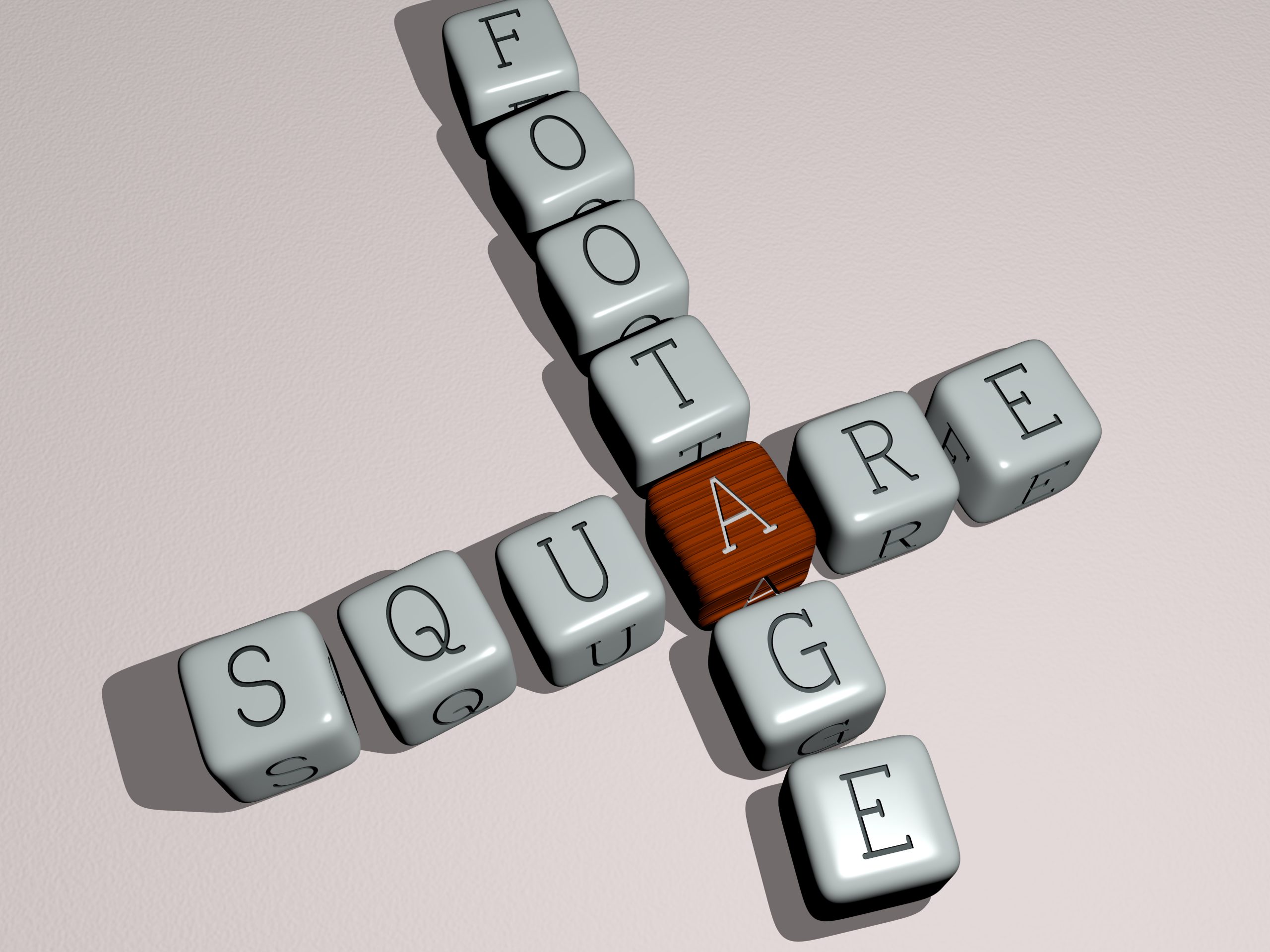Calculating the square footage of your home may seem like a tedious chore, but you will need this number often while operating a short-term rental company. In addition to the fact that future visitors will want to know the size of the rental, you will want the precise measurement for several applications, paperwork, and legal proceedings in the future. To cut a long tale short, you should remove this activity from your to-do list immediately, and it’s probably not as tough or tedious to compute as you believe.
This article will explain why it’s necessary to know the square footage of your property, when it’s needed, how to measure it, and what should (and should not) be included in the overall calculation. We’ll provide you with all the necessary information to begin measuring and ensuring your ultimate result!
Why square footage is essential and when it is necessary
As frequently as new parents are asked their child’s age, owners of short-term rental properties are questioned about the square footage of their home. It is one of those numbers that you learn to tuck away in the back of your mind. In addition to in conversation, other official procedures need you to indicate the property’s square footage. These situations include:
Employing janitorial workers
To choose a qualified team of housecleaners, you should be as forthcoming as possible about your home’s size and cleaning requirements. Your housekeepers will better understand how much time they will need to clean between visitors if you provide the square footage, allowing you to prepare more effectively.
You wouldn’t want to arrange your checkout time for later in the day just to find out that the housekeepers want more time, creating a scheduling issue. Better over-prepared than under-prepared.
Obtaining the occupancy certificate
The certificate of occupancy (which says that your property is safe for habitation) is required for almost all properties and will serve as a supporting document for subsequent procedures (such as obtaining a construction permit).
Requesting a loan
The square footage will be crucial information on loan applications if you are contemplating loans as a strategy to launch your vacation rental company. To guarantee they are making a solid investment in your company, financial institutions, private lenders, and investors will want the precise size of the property.
Obtaining building permits
When applying for building permits for renovations or additions, you will be required to furnish the property’s square footage. Considering the purchase of a fixer-upper? Consequently, this is the most critical factor to make.
Online listing of your property
When selling your home on short-term vacation rental websites such as Airbnb and Vrbo, the square footage of the space will be required for the listing description. This assists your visitors in visualizing the home and understanding how the rent they are paying corresponds to its size. In light of this, it’s a good idea to compare your pricing per square foot to that of comparable listings in the neighborhood.
How to calculate the square footage of your rental property
With a few household items, some basic arithmetic, and a little perseverance, you will be able to determine the property’s square footage. If you have a big property, it may be beneficial to have an additional pair of hands to assist you with this task, however, it is not required.
What equipment should be used?
The calculation of your property’s square footage requires no specialized equipment. If you own a laser measuring instrument, your work will be made much simpler. However, it is not required to own one of these gadgets to do this computation. You probably already own all of the following items:
- A measuring tape
- A calculator (or you may use your phone’s calculator!)
- A large sheet of paper
- A pencil
The steps to take
Step-by-step instructions exist for determining the square footage of a home. On your large sheet of paper, sketch a rough outline of the floor plan, being careful to draw each level on a separate sheet of paper. This does not need to be perfect or to scale; it is only a tool to help you keep track of measurements as you work. You may use the real builder blueprints as a reference if you have access to them. Also, the square footage may be already computed in the builder’s designs. Make careful to verify before beginning!
Using a tape measure, calculate the length and breadth of each room and corridor, noting the dimensions as you go. Then, double the length and breadth of each room to estimate its square footage. Finally, sum the totals for each room to arrive at the total. Continue reading to see which places qualify for inclusion in the overall square footage and which do not.
You may also download one of the several square footage measuring applications available for your smartphone. Even though these applications may not seem as trustworthy as conventional measuring tapes, they may be a valuable friend when calculating the perimeter of a space or the distance between walls. You should evolve with the times!
Guidelines for calculating the square footage
To prevent redundant and confusing arithmetic computations, attempt to split your area into as many squares or rectangles as feasible, particularly if your floor plan is complex. For instance, if a room has an alcove, you should measure it as a distinct area and then add it to the room’s total square footage.
Be careful to preserve all your measurements in several locations! You do not want to go through with this procedure just to lose the calculations and have to begin over. In addition to keeping track of the overall square footage of the property, you should also record the square footage of each room and the measures of all the walls. This will be useful if/when you decide to equip the room.
For this reason, you should also measure the door frames to ensure that your furniture will fit! This will be useful when arranging your holiday rental.
What is included (and excluded) from the square footage?
What constitutes the real square footage of a property? What may and cannot be included in the calculation is a contentious question among property owners. In the majority of instances, the square footage may comprise any livable area.
A room is considered “liveable” if its walls, floor, and ceiling are completed, it is linked to the home’s primary heating and cooling system, and it fulfills a minimum ceiling height standard. These recommendations are from the American National Standards Institute (ANSI); although compliance is optional, therefore, they are more of a suggestion. Currently, there is no official standard for measuring square footage, hence several ways and viewpoints exist.
Consider that various states may have different rules on what you may and cannot include. Before presenting formal evidence of the square footage, you should always verify your state’s rules. The last thing you want is a costly math mistake in the future. Here is an overview of the “extracurricular” areas that may and cannot be included in the overall square footage.
Basements
Only completed basements that fulfill the criterion of “liveable” are permitted (finished walls and floors, are connected to heating and cooling, and meet the ceiling height requirement). The presence of a pool table and mini-fridge in the basement does not qualify it for inclusion in the overall square footage. They must be fully completed and linked to the main home structure.
However, there are still certain regions that do not include completed basements in the overall square footage calculation. Regardless of whether you can include the size of your completed basement in the overall square footage, you should measure it for your records and include it in guest listings.
ANSI makes a distinction between above-grade and below-grade square footage. If you want to adhere to their rules, basements should be described as completed square footage below grade.
Garages
Because garages are often unfinished, they cannot be included in the overall square footage. Garages may only be included in the total square footage if they are completed (according to the aforementioned requirements) and legally classified as dwelling spaces.
Even though you cannot include unfinished portions in your overall square footage, we nonetheless suggest measuring them. It is useful knowledge to have should you decide to complete the area in the future. You already have your measuring tape out, so you may as well use it.
Attics
Regarding attics, the most important consideration is the ceiling height restriction we discussed before. Before anything else, the attic must be completed like any other room.
“Finished spaces must have a ceiling height of at least seven feet, except under beams, ducts, and other obstacles, where the height may be six feet four inches, and under stairs, where there is no specific height minimum.”
At least one-half of the completed square footage in a room with a sloping ceiling must have a vertical ceiling height of at least seven feet; no component of the finished area with a height of fewer than five feet may be included as finished square footage.”
Important clarification: the ceiling height should not be included in the square footage computation since it makes the room three-dimensional. Before adding the space to the overall square footage, this is only a guideline to ensure the space meets the requirements.
Alternatives to square footage measurement
In many instances, you may be able to locate the square footage on the builder’s drawings or in the city’s property records. This will only be useful if the measurement is precise and current and you have no plans to alter the property. Before measuring the square footage, it is highly recommended that you examine the area.
You may also employ an appraiser to do an official property measurement. Although is the most precise option, it comes at an additional cost. You may be able to justify the expense if you require very precise measurements, such as if you want to sell the home.
Takeaways
Calculating the square footage is a straightforward task that will be beneficial in a variety of situations in the future. It involves minimum equipment, rapid arithmetic skills, and perhaps a dash of imagination. Consider this one of the first tasks you must do as a short-term vacation rental home owner.









